Today we ask...
How clean are your floors, really?
Discover the nasties that commonly lurk on our flooring surfaces and the most effective ways to clean them.
At Factory Direct Flooring, we wanted to investigate how effectively and how often we clean our floors, as well as the products and techniques we use to tackle dirt and grime brought in by pets, carried on shoes, and spread by little ones.
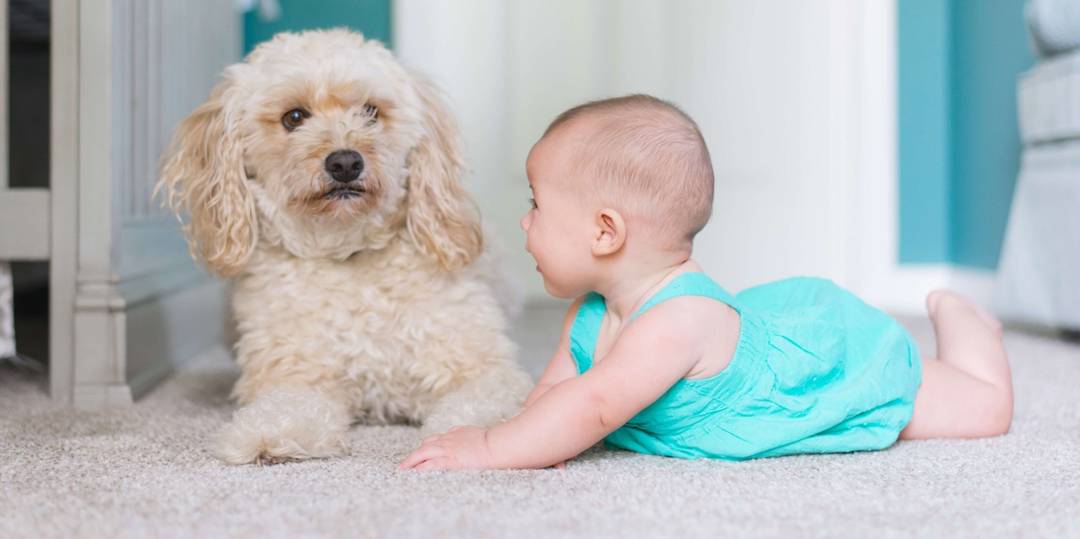
Originally posted 11 January 2024
Last updated 11 January 2024
Paving the way for cleaner floors and hygienic homes
Factory Direct Flooring conducted a swab experiment in eight different homes in the UK, as well as speaking to cleaning experts at Homeaglow, and health expert, Dr. Deborah Lee, at Doctorfox.co.uk. Here, we explore the flooring types that carry the most germs, and how effective different cleaning methods are for removing dirt and bacteria.
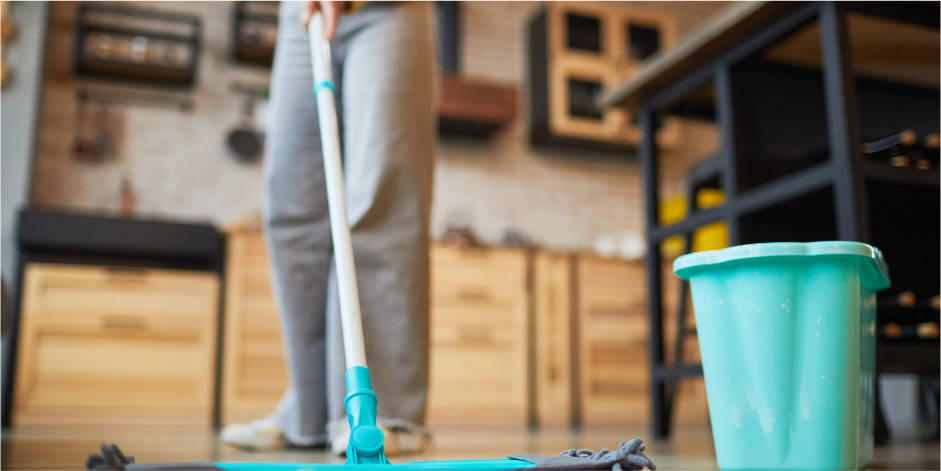
Discover just how clean your floors may (or may not!) be, and what flooring could be the best option for you if you're looking for low-maintenance, durable and stylish flooring for your home.
How we did the experiment
Our step-by-step process
We followed a rigorous process throughout the investigation. Here's what we did to unearth what's lurking beneath the nation's feet at home.
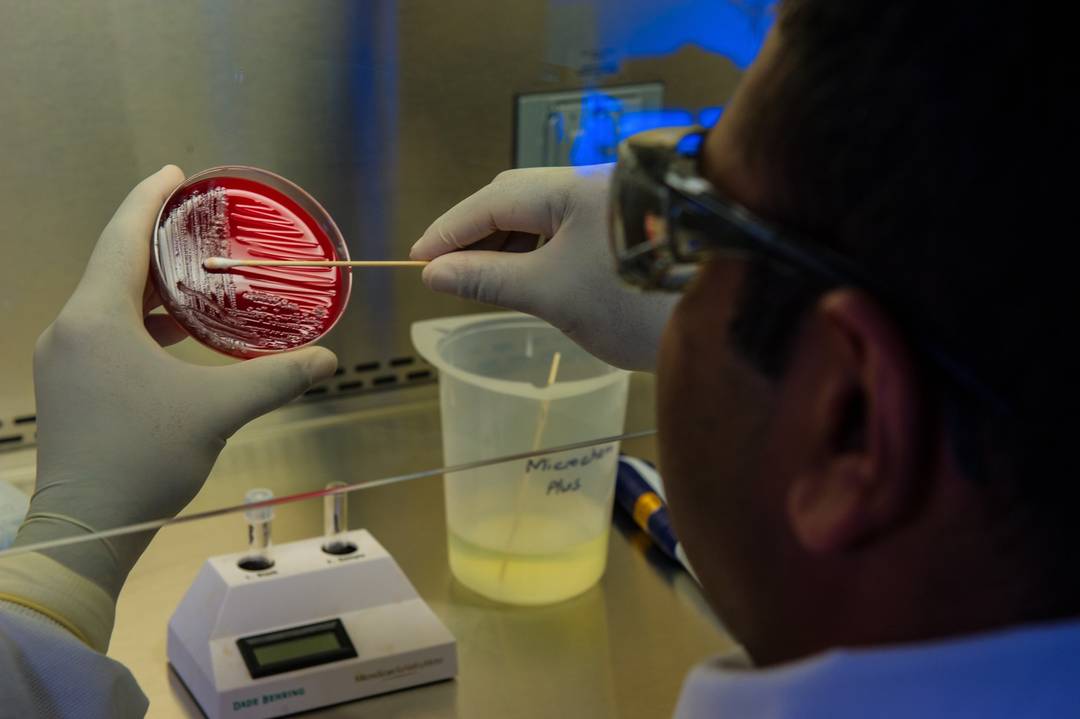
Step 1
Sourced a reputable microbiology laboratory to provide swab kits, along with insights about the types of bacteria that are commonly found on floors.

Step 2
Identified the flooring types, room types, and cleaning methods that we'd put to the test.
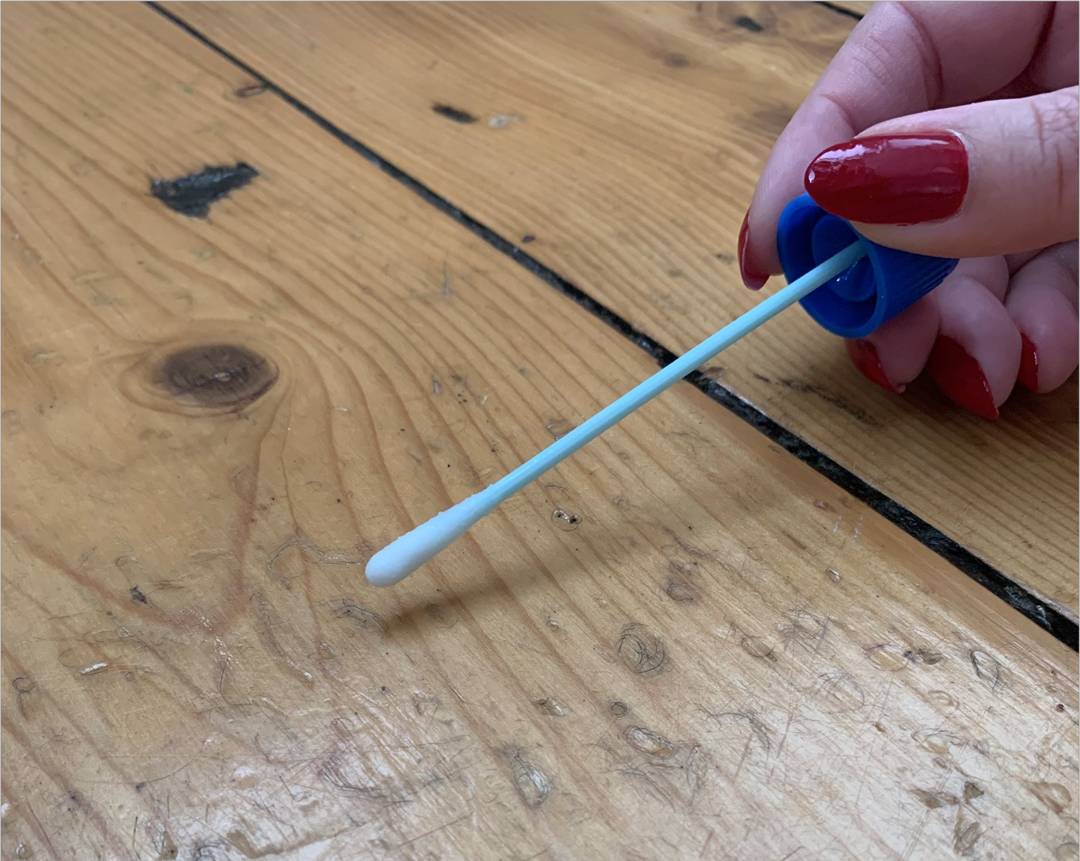
Step 3
Took swabs from a range of homes, including those with and without children or pets, and whether or not shoes are ever worn indoors.

Step 4
Cultivated the swabs back at the lab within 48 hours of taking them.
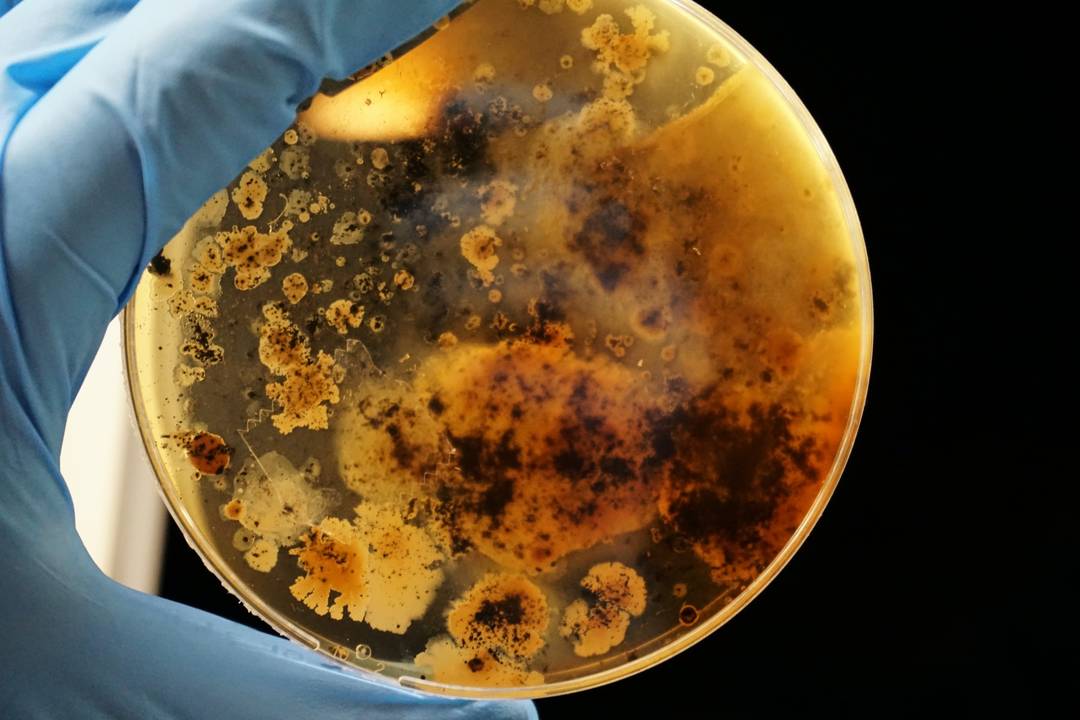
Step 5
Monitored and measured bacterial growth under lab conditions over 28 days.
How we analysed the results
Our comprehensive experiment involved a team of expert microbiologists at BioLabTests, who analysed nearly 100 swabs taken from different flooring types in UK homes.
Each room was swabbed before and after a thorough clean, using methods such as floor wipes, steaming and vacuuming, to understand which cleaning techniques are the most effective. Swabs were taken within a 10cm square from high-traffic areas in each room, and were not allowed to touch any other surface during the experiment.
Germs found on different floors were measured in colony-forming units (or CFUs), which are groups of fungal or bacterial cells that multiply together. It's important to note that each sample we took could be measured up to a maximum of 300 CFUs—any results above that are considered 'too numerous to count'. That's why the figures below should be considered as the minimum level of bacteria we found.
Which rooms had the dirtiest floors?
In each room, we took two swabs of the same floor area; once before, and once after cleaning it. This allowed us to uncover which flooring types are home to different strains of bacteria, and what the most appropriate cleaning methods are for each room.
The rooms we swabbed included
- Bathroom
- Hallway and stairs
- Kitchen and dining room
- Bedroom
- Living room
- Home office
Bathroom
The bathroom floor was by far the dirtiest of all the rooms we swabbed, with at least 933 CFU of bacteria found. But it was also the easiest to clean—five different cleaning methods were tested, and, on average, they cut bacteria by 75%. Staphylococcus was the bacteria we found the highest volumes of in bathrooms. The most effective cleaning techniques for tackling bathroom bacteria were vacuuming, steaming, and mopping, each reducing germs more than average, while floor wipes performed poorly (and were only 13% effective).

Bathroom findings
This room had the dirtiest floor overall, but it was also the easiest to clean.
Bacteria Score

Cleaning score

Hallway and stairs
A common thoroughfare for outdoor footwear, muddy paws, and pushchair wheels, the flooring through the hallway and stairs was the second dirtiest in the home, with at least 675 CFUs found. Carpet, real wood, and laminate were the most common floor types we tested here, and bacillus was the most concentrated bacteria type found in the swabs. Unlike the bathroom, it was one of the hardest areas to clean, but to our surprise, sweeping was found to be the more effective technique. This traditional method reduced floor germs in the hallway and stairs by a staggering 96%, while mopping with detergent was 35% effective.
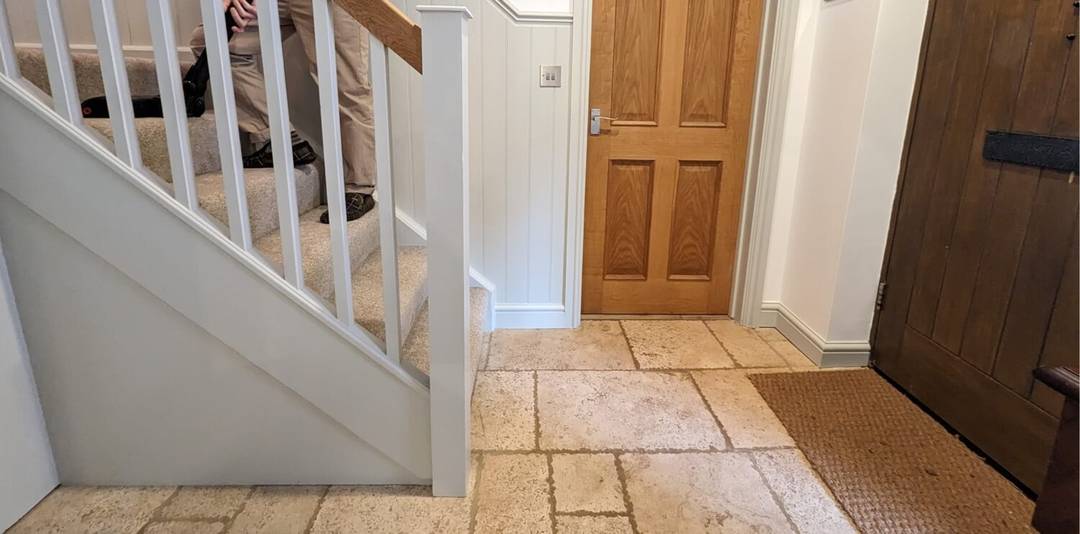
Hallway and stairs findings
This room had the second dirtiest floor overall, and was one of the hardest to clean.
Bacteria Score

Cleaning score

Kitchen and dining room
Kitchens are one of the most active rooms in the home, and often have external doors, so we weren't surprised to find it among the top three rooms with the dirtiest floors. On average, 649 CFUs were found on swabs before cleaning. The bacteria types with the highest CFUs were staphylococcus (183), and yeast and mould (157). Thankfully, it was one of the easiest rooms to clean. White vinegar mixed with water performed exceptionally well and reduced germs by a whopping 99%, followed by floor wipes which cut bacteria by 98%. On the other hand, sweeping proved to be a lacklustre cleaning technique in the kitchen, since it was only 48% effective.
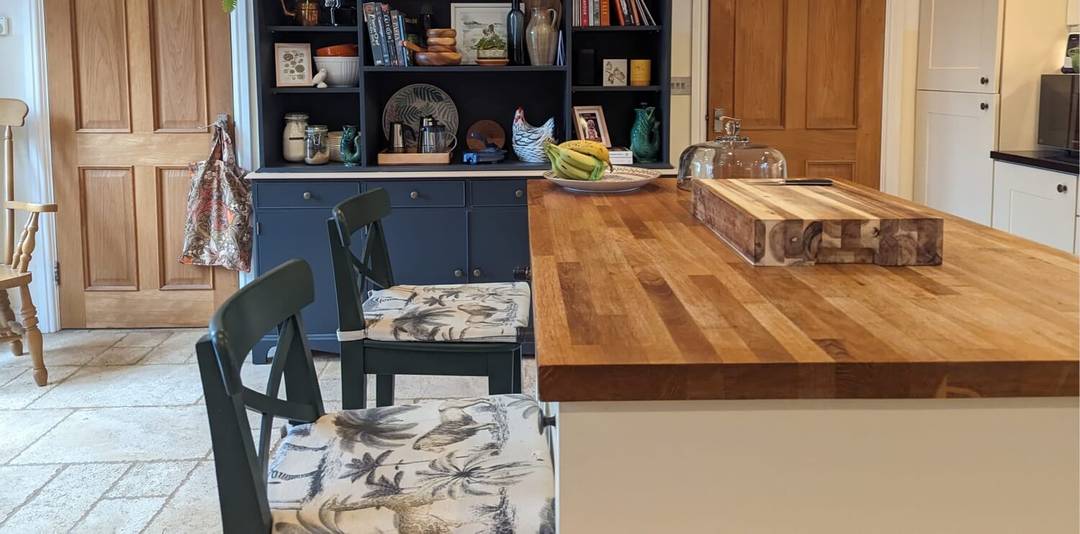
Kitchen and dining room findings
Despite being one of the dirtiest rooms, the kitchen and dining room floor was one of the easiest to clean.
Bacteria Score

Cleaning score

Bedroom
When we look at averages, the bedroom was found to be the 4th dirtiest room. However, when we look only at rooms with carpet, the bedroom floor turned out to be the dirtiest, and by quite a long way—at least 591 CFUs were found hiding in bedroom carpets before cleaning, compared to 375 CFUs on average for other rooms with the same floor type. Staphylococcus was especially rife on the bedroom carpet, making up more than two-fifths (or 244 CFUs) of all the germs found there. All bedrooms we tested had carpets, so vacuuming was the only cleaning technique we used here, and it was 53% effective (compared to 72% in other carpeted rooms).

Bedroom findings
The bedroom floor was the toughest to clean in the whole house, with germs reduced by just 53% on average.
Bacteria Score

Cleaning score

Living room
Despite being at the heart of family life, the living room was found to have one of the cleanest floors, with just 498 CFUs of bacteria found on the surface before cleaning, compared to 650 CFUs on average. That said, when we look at rooms with carpets, the living room floor was the third dirtiest in the house. Bacillus was the most dominant bacteria type found in the swabs, followed by staphylococcus, then yeast and mould. Overall, vacuuming was the most effective cleaning method in the living room, cutting germs by 88%, while sweeping was the least effective (40%).
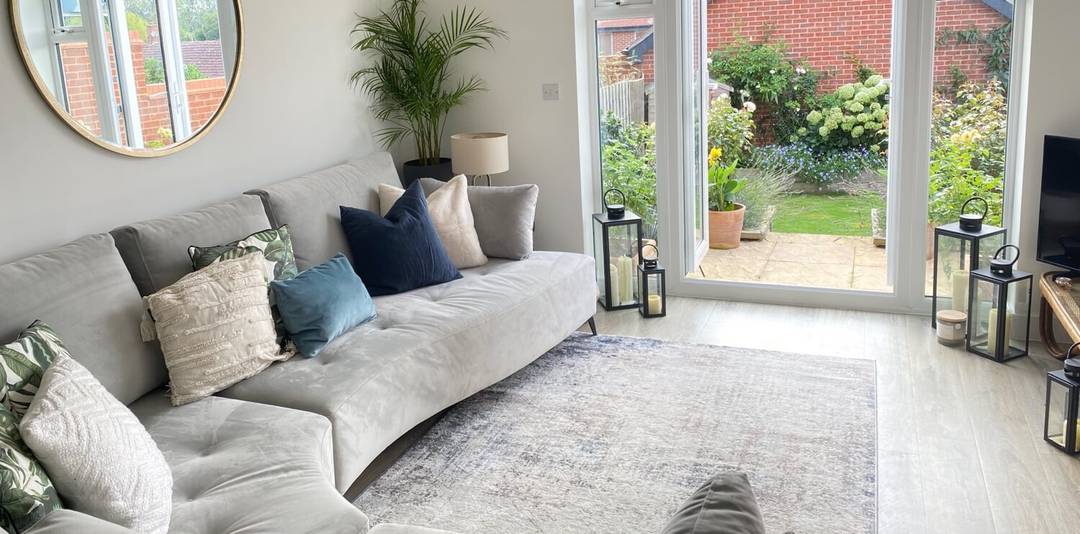
Living room findings
The living room floor had 498 CFUs before cleaning, making it one of the least dirty rooms, but it was also hard to blast the bacteria living there.
Bacteria Score

Cleaning score

Home office
The floor in the home office had the fewest bacteria counts in the house, with just 401 CFUs before cleaning. Swabs were taken under desks, near doorways, and around seating where traffic tends to be the highest. Yeast and mould were the dominant germs found here, followed by bacillus. The good news is that the home office floor was one of the easiest to clean, showing a 73% average reduction in germs. Vacuuming stole the show, and cut bacteria by 83%. Floor wipes, on the other hand, were less impressive at only 25% effective.

Home office findings
The home office floor harboured the least bacteria, and was also one of the easiest to clean.
Bacteria Score

Cleaning score

Are these bacteria types harmful to our health?
To understand whether the bacteria types we found could pose a health risk, we spoke to Dr Deborah Lee at Doctorfox.co.uk. She said:
“Everything you can see or touch is covered in bacteria. Luckily, the vast majority of bacteria are harmless, and some even have benefits for human health such as those that live in the gut microbiome. In fact, less than 1% of bacteria cause illness in humans.”
Dr Deborah Lee at Doctorfox.co.uk
But Dr Lee went on to warn that, when they do cause illness, the consequences can be nasty. For instance, one of the most common bacteria types we found on floors was staphylococcus, or MRSA (which stands for methicillin-resistant staphylococcus, meaning they're a type of staphylococcus that can't be killed by the antibiotic, methicillin). It was more commonly found in the carpets we swabbed, especially in bedrooms. Dr Lee said:
“Most people do not get infected with MRSA. However, it can become invasive and cause infections such as boils, abscesses, cellulitis, impetigo and gastroenteritis. It can also cause serious infections such as toxic shock syndrome and sepsis, which can be fatal.”
Dr Deborah Lee at Doctorfox.co.uk
To avoid MRSA, Dr Lee recommends regular hand washing, covering any wounds, sores, cuts or scrapes until they're healed, and avoiding sharing items like razors and towels.
Which cleaning methods were most effective?
To find out which cleaning methods are the most effective at combating different bacteria types, we tested six of the most common techniques across different floor types and rooms.
The cleaning methods that we investigated include
- Steaming without detergent
- White vinegar mixed with water
- Vacuuming
- Mopping with detergent
- Sweeping
- Floor wipes
Each area was swabbed before and immediately after cleaning for a fair and accurate experiment.
Steaming
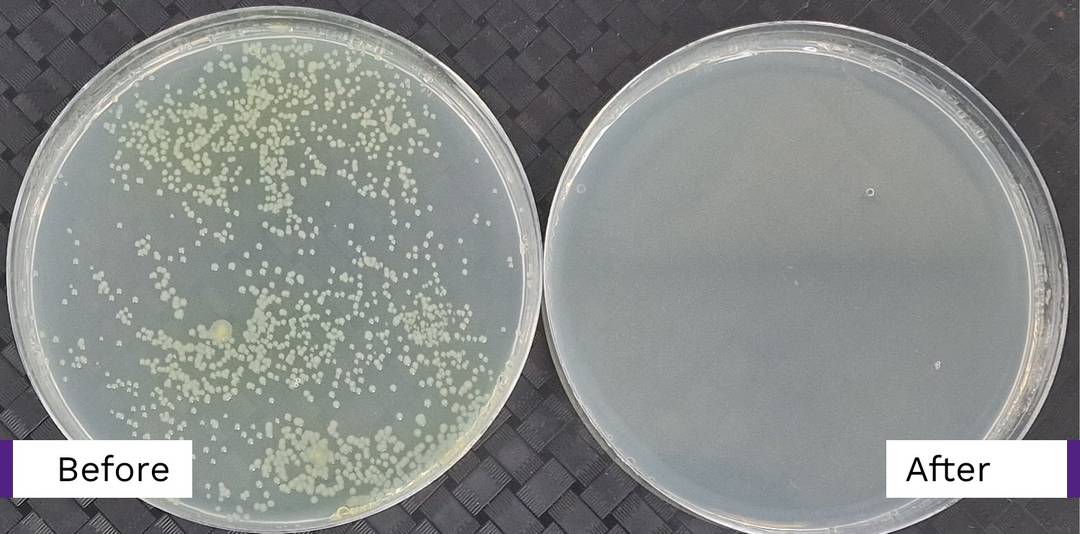 Pseudomonas found on a tiled floor in a kitchen, before (≥300 CFUs) and after (<1 CFUs) cleaning it with a steam mop.
Pseudomonas found on a tiled floor in a kitchen, before (≥300 CFUs) and after (<1 CFUs) cleaning it with a steam mop.
Steaming proved to be the most effective cleaning method we tested. It cut bacteria by 77%, and was especially effective on tiles, natural stone and slate floors. Steam mops have become a cleaning favourite in UK homes, but aren't suitable for some flooring types, including carpets and laminate flooring.
During the experiment, we tested steaming without using detergent, to see how effective the boiling temperatures were against different bacteria types.
Pros
- No harsh chemicals
- Quick and easy
- Best method for natural stone and slate floors
Cons
- Not suitable for all floors, including laminate
- Some drying time
White vinegar and water
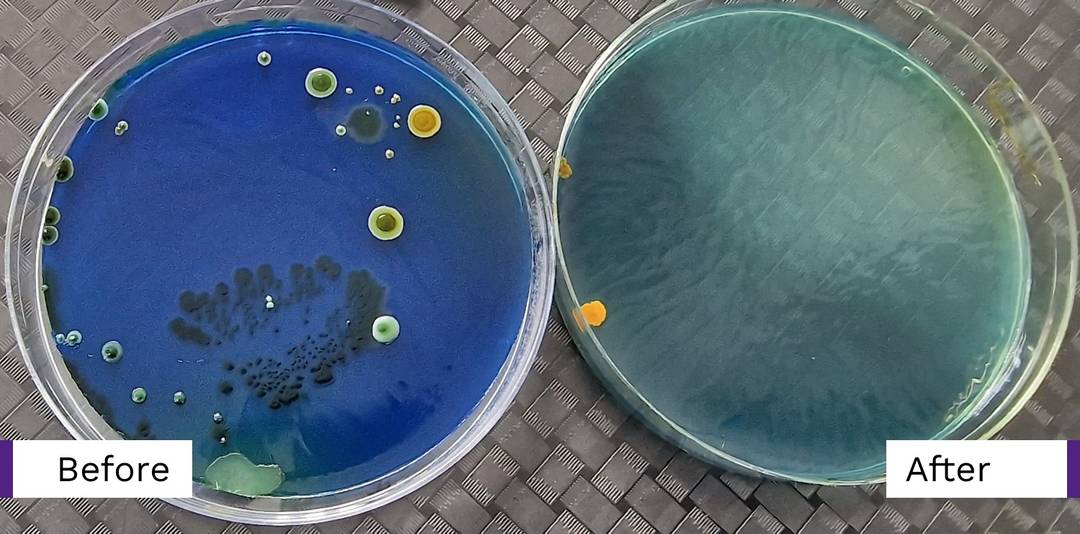 Bacillus found on an LVT floor in a bathroom, before (≥300 CFUs) and after (1 CFUs) cleaning it with white vinegar and water.
Bacillus found on an LVT floor in a bathroom, before (≥300 CFUs) and after (1 CFUs) cleaning it with white vinegar and water.
This method is an up-and-coming trend amongst many environmentalists looking for 'less harmful' cleaning options—and it delivers. Our experiment found it to be the second most effective cleaning method we tested, cutting bacteria by 71% on average. It was seriously good at reducing staphylococcus (cutting it by 96%) and was the best method for cleaning kitchens and dining rooms.
Our mixture followed a ratio of 2-3 caps of white vinegar to one litre of water.
Pros
- More eco-friendly than other methods
- Cleans effectively
- Cost-effective
Cons
- Not suitable for all floor types, including carpet and laminate
- Long drying time
Vacuuming
 Yeast and mould found on a bedroom carpet, before (≥300 CFUs) and after (6 CFUs) it was vacuumed.
Yeast and mould found on a bedroom carpet, before (≥300 CFUs) and after (6 CFUs) it was vacuumed.
Vacuuming was the third most effective cleaning method overall, and cut bacteria present by 71% on average. It was particularly good for removing yeast and mould bacteria (cutting it by 71%), though it only reduced enterococcus by <7%, a bacteria type that was most concentrated on stairs and hallways, and was most common in kitchens.
Easy to do and suitable for all floor types, including laminate, carpets, hardwood, and LVT, we tested vacuuming in every room to understand how effective the method was on hard floors compared to those with a pile. Vacuuming cut bacteria by 98% when tested on real wood, laminate, and LVT. Meanwhile, it was 67% effective on carpet.
Pros
- Suitable for most homes and floor types
- Easy to use
Cons
- Requires regular emptying and cleaning out to prevent dirt from spreading
- Bulky equipment could make it harder to clean floors thoroughly
Mopping
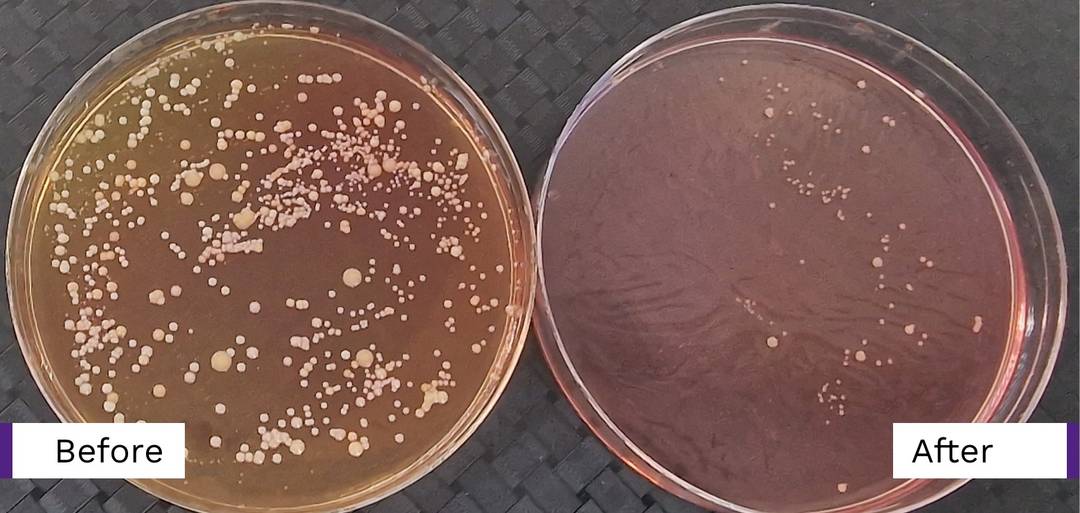 Staphylococcus found on a real wood floor in a kitchen, before (≥300 CFUs) and after (92 CFUs) cleaning it with a mop.
Staphylococcus found on a real wood floor in a kitchen, before (≥300 CFUs) and after (92 CFUs) cleaning it with a mop.
Mopping with warm water mixed with detergent was overall the fourth best cleaning method for removing harmful nasties that lurk on flooring surfaces. It was pretty effective for cleaning bathrooms, and kitchen and dining rooms. This method performed best on vinyl floors (which was overall the dirtiest flooring type before cleaning), reducing bacteria on them by 97%. Take a look at our vinyl cleaning guide for more tips.
When we look at the different bacteria types that we found, mopping with detergent was especially effective against pseudomonas (reducing it by 80%), but less suitable for tackling yeast and mould, which it cut by 30%.
Pros
- Relatively cost-effective
- Suitable for most homes
- Best method for vinyl floors
Cons
- Older mops could harbour more bacteria
- Not suitable for all floor types, including carpet
- Long drying time
Sweeping
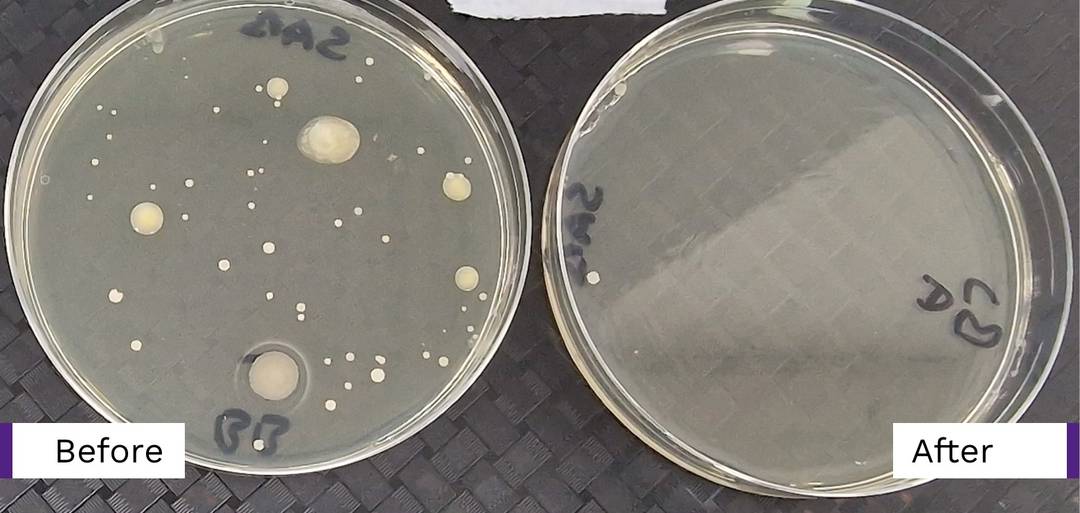 Yeast and mould found on LVT flooring in a living room, before (67 CFUs) and after (3 CFUs) sweeping it.
Yeast and mould found on LVT flooring in a living room, before (67 CFUs) and after (3 CFUs) sweeping it.
The oldest and most basic of cleaning methods, sweeping proved itself somewhat effective for removing dirt and debris, reducing bacteria on floors by 58% on average. However, it wasn't very powerful against streptococcus, reducing it only by 20%.
Surprisingly, sweeping was the best for cleaning hallways and stairs, cutting bacteria here by 96%, while vacuuming in this area only reduced germs by 58%.
Pros
- Quick and easy
- Cost-effective
- No harsh chemicals
Cons
- One of the least effective against bacteria overall
- Dirt can build up in bristles
Floor Wipes
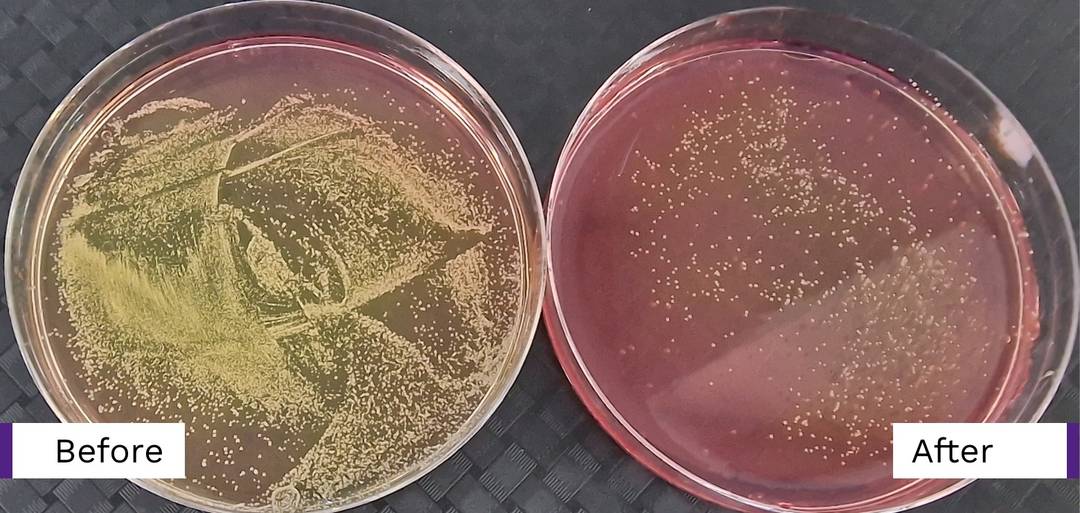 Staphylococcus found on a real wood floor in a kitchen, before (≥300 CFUs) and after (92 CFUs) cleaning it with a mop.
Staphylococcus found on a real wood floor in a kitchen, before (≥300 CFUs) and after (92 CFUs) cleaning it with a mop.
Walk down the cleaning aisle of a supermarket, and you'll see stacks of floor wipes with claims like 'kills 99% of bacteria' on their packaging—but not every time, according to our findings. We were surprised to find floor wipes were the least effective of all the cleaning methods we tested, eliminating just 46% of germs on average.
However, they were pretty effective against bacillus, a bacteria type most commonly found in bathrooms, hallways and staircases. On average, floor wipes reduced this bacteria type by 66%. And in one of the kitchens we tested floor wipes in (a room with natural stone and slate flooring), bacillus was cut by 99%—true to the claims on the packaging.
Pros
- Quick and easy
- Convenient and time-saving
- Suitable for most hard floor types
Cons
- Can be expensive
- Less eco-friendly than other methods
- Least effective cleaning method overall
Cleaning mistakes to avoid
Regardless of what method is best to clean our floors, we spoke to Aaron Christensen, Resident Cleaning Expert at Homeaglow, about common cleaning mistakes to avoid. He said:
“One of the most common floor cleaning mistakes is to start with the floor. You want to start high and work your way down, not the opposite. Save your floor for last or it'll be dusty and dirty again by the time you finish cleaning everything else. Attack your cleaning in this order: lighting and high fixtures first, then windows and mirrors, surfaces, and sinks. Finish with your floors.
Another mistake is using the same cleaning cloth for the entire house. This can spread bacteria throughout your home. Avoid this by using different coloured cloths for different tasks. For example, don't use the same cloth for wiping down your skirting boards and your toilet."
Aaron Christensen, Resident Cleaning Expert at Homeaglow
Final Results
Our experiment revealed intriguing insights about the bacteria that can be found on our floors at home. With at least 933 CFUs of bacteria found before cleaning, the bathroom floor emerged as the dirtiest—but thankfully, it was also the easiest floor to clean, with the most effective cleaning methods including vacuuming, steaming and mopping. Meanwhile, home offices were among the cleanest rooms in the house, with just 401 CFUs of bacteria found before cleaning.
Bedroom carpets were the hardest to clean thoroughly. In fact, bedrooms have the filthiest carpets in the whole house, with high levels of staphylococcus, bacillus, and yeast and mould found in the swabs. Vacuuming only cut germs on the bedroom floor by 53%, compared to the average of 72% for other carpets.
In the kitchen, white vinegar mixed with water proved to be the most effective cleaning method, cutting bacteria here by 99% on average. According to Statista, “theres a growing preference for eco-friendly household cleaners [in the UK], driven by increasing environmental consciousness among consumers,” so this cost-effective and eco-friendly option is a real winner. Aaron Christensen at Homeaglow added: “Vinegar can be used to clean nearly everything. This is better for your health, will save you money, and reduce your environmental impact. Just dont use this on stone floors like marble or granite as it will eat away at the surface.”
Which strains of bacteria were found on each room's floor before they were cleaned?
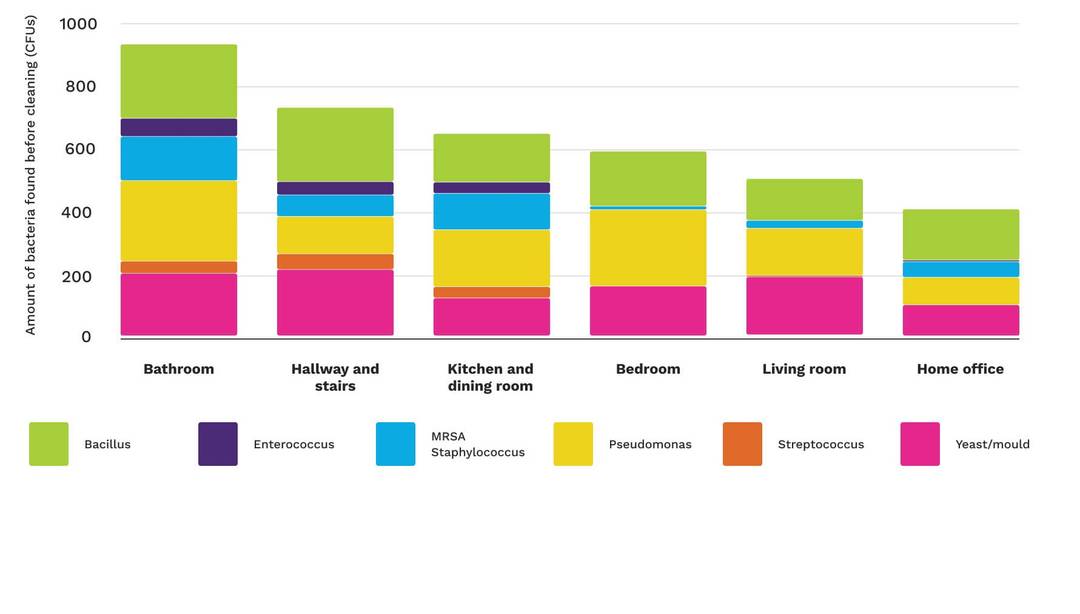
Which cleaning methods are the most effective for dirty floors?

How floor bacteria differs by household type

Amount of bacteria removed by each cleaning method
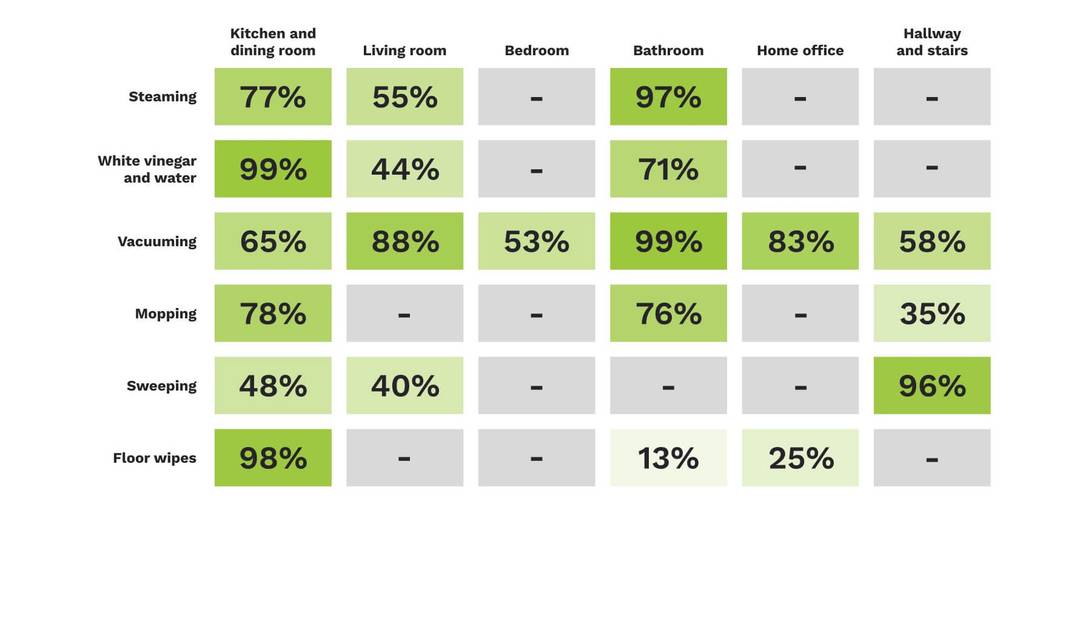
Which floor types are easiest to clean?
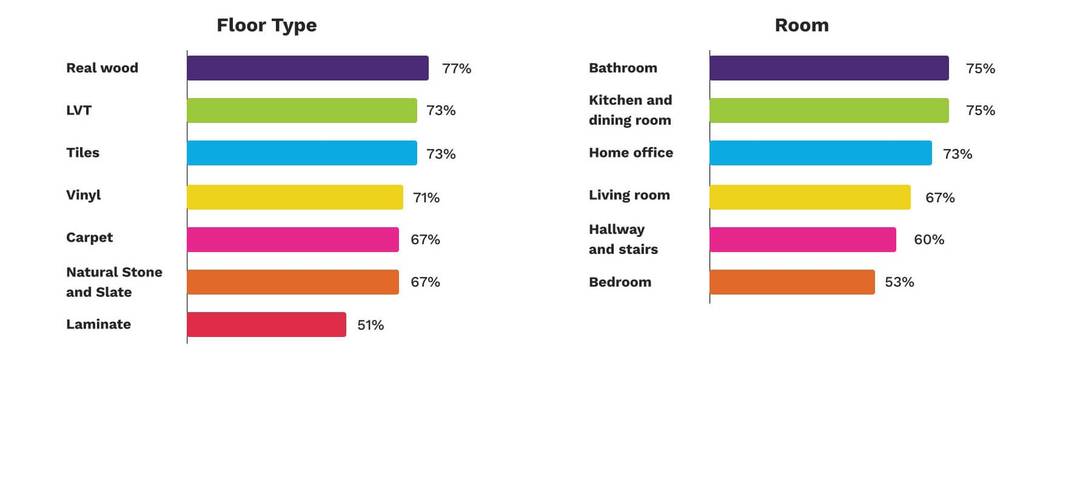
What kind of flooring could be the best option for you?
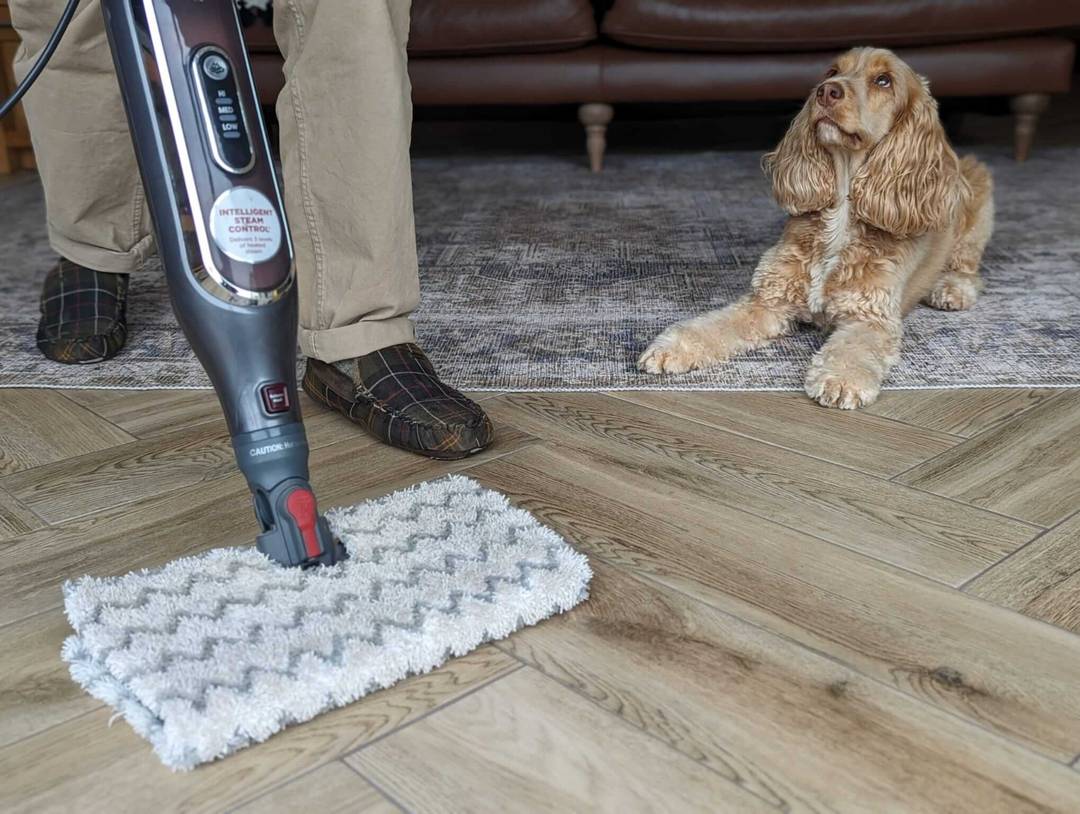
With the findings of our experiment in mind, the choice of flooring is critical for homeowners seeking low-maintenance, durable, and stylish options. In bathrooms, opting for flooring materials that can be easily cleaned with steaming, mopping or vacuuming should help to ensure both hygiene and convenience, such as LVT or vinyl. Meanwhile, in bedrooms, you may wish to explore hard floor options instead of carpet, since this emerged as one of the hardest to clean. Real wood flooring might be a better option in bedrooms because it was found to be one of the easiest to clean effectively.
If you're still undecided about what floor type is more suitable for your budget and needs, get in touch with our team today —we'll be happy to send you two free samples, and offer expert guidance to help you make the best choice for your property.
We'll post your samples First Class
Complete your order and simply place another!
